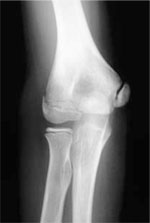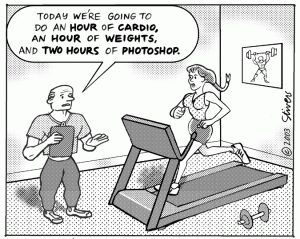Brian Schiff’s Blog
Injury Prevention, Sports Rehab & Performance Training Expert
Today I am going to share two pieces I have written for other publications as I think the exercises I discuss have real merit and broad application for competitive athletes and weekend warriors. I am a columnist for PFP Magazine and Endurance Magazine and these articles come from those publications.
Single Leg Theraband Activation Squats
The idea behind this exercise is applying progressive gradients of resistance that encourage the faulty motion (pulling the leg into adduction and internal rotation) to facilitate increased activation of the gluteus medius/minimus and small lateral rotators to create an anti-adduction/internal rotation force. Decreasing such moments at the knee will reduce IT Band issues, patellofemoral pain, ACL injury risk and overuse problems often seen in running.
Click here to see how to perform the exercise
Mobility Training for Endurance Athletes
It is no secret that endurance events require repetitive motion and often carry a higher risk of overuse injuries. In light of this, poor thoracic extension and/or limited ankle dorsiflexion negatively impact proper running and riding mechanics and lead to faulty movement patterns. Beyond physical stress, this reduces performance capacity as well. There are two simple mobility exercises to help correct imbalances that may be hindering you.
Click here (go to page 16) to see how to sustain your body with these exercises
The News and Observer (our local paper here in the Triangle) recently ran a great story on overuse injuries in young athletes. I firmly believe this is one of the fastest growing injuries I see in the clinic and in many cases it is preventable. One of the biggest issues now is this commonplace idea that gifted athletes should play the same sport year-round to get ahead.
I remember growing up as a kid and playing football, basketball and baseball in the fall, winter and spring. While AAU basketball and Legion ball existed, most kids were still playing multiple sports. Over my 15 years as a physical therapist I have witnessed several of these one sport stars see their playing time and bodies take a hit due to injury.
The American Orthopedic Society for Sports Medicine (AOSSM) and the American Academy of Orthopedic Surgeons (AAOS) state that overuse injuries account for nearly half of the 2 million injuries seen among high school athletes each year. While soccer and swimming seem to send many athletes into PT, any repetitive throwing or overhead activity bears considerable risk for an eventual shoulder or elbow problem as well. Some of the common injuries I typically see are:
- Patellofemoral pain
- Shin splints
- Rotator cuff injury
- Bursitis
- Shoulder instability
- Little League elbow

Little League Elbow (medial epicondylar apophysitis)
These injuries are just some of the most common ones I see. In the article, the reporter focused on baseball and throwing. With that in mind, consider research published in the American Journal of Sports Medicine this past February from renowned surgeon James Andrews that revealed players who pitch more than 100 innings in a calendar year are 3.5 times more likely to be injured.
He goes on to say that “these injuries are the result of a system that prepares genetically gifted athletes to play at the highest levels, but eliminates most players because their bodies cannot withstand such intense activity at such an early age.” Sadly, he told the reporter that in 1998 he performed the Tommy John procedure on 5 kids high school age or younger, while in 2008 he did the same procedure on 28 children in the same age range. This injury is usually caused by throwing too much too soon.
Consider the following data on suggested pitch counts per game (source James Andrews, MD & Glenn Fleisig, MD):
- 8-10 y/o = 52 plus/minus 15 pitches
- 11-12 y/o = 68 plus/minus 18
- 13-14 y/o = 76 plus/minus 16
- 15-16 y/o = 91 plus/minus 16
- 17-18 y/o = 106 plus/minus 16
Unfortunately, I can personally relate to this blog post and story. I was a promising young pitcher up until the point I threw my arm out in travel baseball at age 13. The pain got so bad in my arm I could barely throw a ball 10 feet. I remember the orthopedic surgeon telling me that I could not throw again the rest of the summer. The pain (and memory of it) was so bad I elected to focus on position play and not to pitch again until my senior year of high school. At that point, my arm was no longer the same as I had missed three years of practice and development. Now, I too had become one of those kids whose body was never the same.
So, as a rehab and strength & conditioning professional, I want to help educate and promote better awareness to athletes, parents, coaches, trainers, AD’s, ATC’s and anyone who is involved in the care and training of young athletes. Fortunately, people are taking positive steps to reduce overuse injuries. One great initiative is STOP – Sports Trauma Overuse Prevention and you can learn more by clicking here to visit their website.
In the end, we must continue to educate everyone that the old motto of “No Pain, No Gain” is NOT the way to handle overuse injuries as this mentality may ruin the careers of young athletes or lead to an otherwise preventable injury and/or premature musculo-skeletal damage. Pain truly is a warning signal the body gives us to detect mechanical problems and make changes in our training/activity level until we sort out the cause and solution. I hope you will join me in supporting this mission and working hard at making sports fun, safe and free of overuse injuries for young athletes of all ages in the years to come.
References – The News & Observer – May 15, 2011
I think most people involved in health and fitness are up to speed on the move to address mobility and stability at the hip as an integral part of our assessments and exercise prescription. I know in my practice I see lots of issues with both a lack of hip stability and mobility.
As I learn, practice and evolve as a professional, I find myself looking for more bang for my buck with exercises. A few themes and trends in my own training include:
- Increasing emphasis on body weight exercises
- More and more single leg training
- Integrated movement patterns versus isolation
So, if you are familiar with Gray Cook and Mike Boyle (I am specifically referring to their writing and discussion on the joint by joint approach) you know that they advocate for increasing mobility at some joints and gaining stability at others. Ironically, the hip has a need for more of both depending on the movement and individual imbalances.
So, I really enjoy exercises that provide some of each and meet the trends I referenced above. I just released one such hip exercise in my “Functionally Fit” Column in PFP Magazine. I call it the RDL Hip Driver.


Click here to read the entire post with a full description of how to perform the exercise and its functional application.
Today’s blog post is about an observation and fundamental tenet of my practice today as a sports physical therapist and fitness professional. Having been in the business of rehabbing and training the human body for 15 years, I feel qualified to say I know a thing or two about training and exercise.
Perhaps one of the greatest pearls I can pass along as it relates to being a health and fitness professional involves the art of teaching. You see, I have witnessed firsthand the desire people have to attain knowledge when it comes to their bodies. Just look at how quickly and often people take the web in search of answers from the latest ab workout to the source of and remedy to their every ache and pain.
We live in a society of information overload. Unfortunately, the web, YouTube, FB, Twitter and so on give just about anyone a stage to philosophize and sound off as an “expert.” Many people who claim to know how to “train” you for this and that have little to no real world experience doing it, nor do they possess enough pre-requesite knowledge to truly be considered an expert.

I find many people mistakenly look for what they perceive to be the most “in” or “intense” training they can find, as they believe this is the way to finally meet their goals. In reality, what they should be seeking is someone interested in teaching them how to better understand their own body and how to apply the proper training principles to it in order to bring about the desired result they are so desperately seeking.
Training typically involves putting together drills, workouts or routines to challenge clients physically. Teaching, on the other hand, is centered on educating clients how to listen to their bodies and use that feedback to appropriately adjust physical loads and exercise programming to avoid injury and make positive physical adaptations.
In my last post, I shared some practical plyometric drills with you to help teach proper landing mechanics in an effort to reduce ACL injuries. Yesterday, I presented my comprehensive approach to knee training at our ACL Symposium in Cary, NC.

One of the fundamental errors I see coaches and athletes make is abandoning their pre-season training efforts during the in-season. While athletes need to spend the majority of the in-season focusing on sports skills, they must also maintain the neuromuscular training adaptations acquired in the off-season and pre-season.
In my mind, the phrase “use it or lose it” is applicable for the neuromuscular training effects we see with balance, strength, agility and plyometric training. This is especially true for our high risk female athletes like soccer and basketball players who suffer knee sprains, ACL tears and patellofemoral pain at disproportionate rates.
I often hear coaches say, ” I don’t have time to get workouts done and still accomplish what needs to be done at practice.” While, time management may be difficult, I think coaches could probably squeeze in a single training session lasting 15-20 minutes if they simply knew how important it was to the overall health and performance capacity of their team.
With that said, I like to offer simple, yet effective exercises that can be done on a court or field with the whole team simultaneously without the need for expensive equipment. Exercises should focus on activating the glutes (including the medius and minimus) as well as training the hamstrings more since most female athletes tend to be quad dominant.
These exercises are just as effective for males too. So, in the video below I will reveal some exercises I prefer to do to increase strength and reduce injury risk. Perform 2-3 sets of 8-15 reps focusing on strict form throughout.

